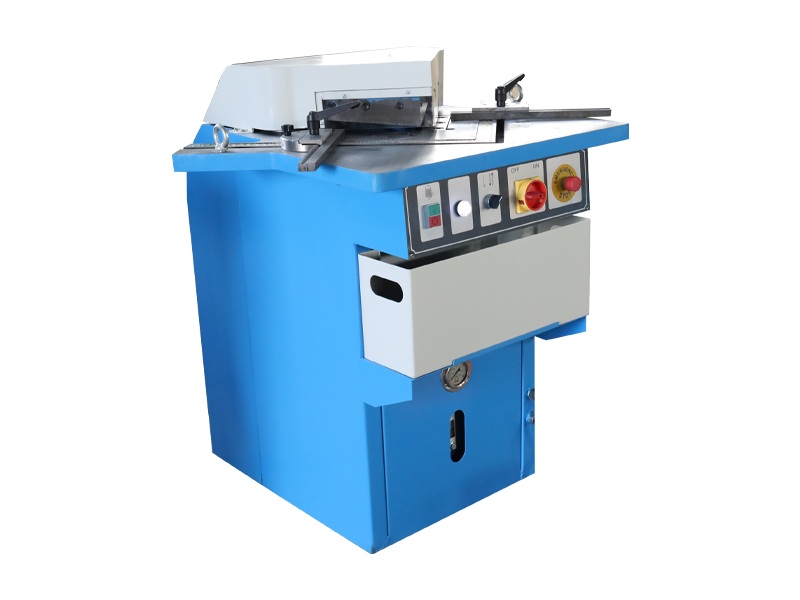For sheet
metal shear machines—critical assets in fabrication that must adhere to standards like ISO 13918 (metal cutting quality) and ANSI B11.4 (shear safety)—systematic maintenance is the cornerstone of operational reliability, operator safety, and cost control. Unlike generic guidance, this framework integrates technical specifications, industry metrics, and OEM-aligned practices to tailor care for hydraulic, mechanical, and pneumatic shear types, minimizing unplanned downtime (a $2,000–$5,000/hour cost for high-volume shops) and extending machine lifespan by 30–40%.
1. Foundational Step: Understand Your Shear’s Technical Profile
Before initiating maintenance, align your routine with the machine’s design—each shear type relies on distinct systems that demand targeted care.
| Shear Type | Core Operating Principle | Critical Components | Key Technical Specifications |
|---------------------|---------------------------------------------------|-----------------------------------------------|-------------------------------------------------------|
| Hydraulic Shears | Hydraulic cylinders (15–20MPa pressure) drive blade descent; servo valves regulate force | Hydraulic manifold, piston seals, blade gap adjuster | Max shear thickness: 3–25mm (200–1,000 ton models); oil viscosity: ISO VG 46 (5–40°C ambient) |
| Mechanical Shears | Flywheel (1,200–1,800 RPM) + crankshaft transmit mechanical force; clutch controls cycle | Clutch linings, crankshaft bearings, stroke limiter | Cycle speed: 15–25 cuts/min; max shear force: 50–500 tons |
| Pneumatic Shears | Compressed air (6–8 bar) actuates blade movement; ideal for thin sheets (≤3mm) | Air filters, solenoid valves, pressure regulators | Air consumption: 0.5–1.2 m³/min; blade travel: 10–30mm |
Actionable Tip: Cross-reference your machine’s serial number with the OEM’s SOP to confirm blade material (e.g., H13 tool steel for stainless steel, 9CrSi for mild steel) and hydraulic oil change intervals—generic parts or fluids can reduce component life by 50%.
2. Routine Inspection: Daily/Weekly/Monthly Protocols (Quantified Checks)
Proactive inspection catches 70% of shear failures (e.g., blade misalignment, hydraulic leaks) before they escalate. Below are data-driven checks aligned with industry best practices:
2.1 Daily Inspection (5–10 Minutes Pre-Startup)
Focus on safety-critical and high-wear components:
- Blades: Check for nicks (>1mm = replace) or dulling (loss of reflective edge); verify blade gap with a feeler gauge (≤0.02mm/100mm刃长—exceedance causes burrs failing ISO 13918 Class 2).
- Hydraulic System: Inspect hoses for bulging/cracks; confirm oil level (between “MIN/MAX” marks); monitor pressure gauge (波动≤±0.5MPa—spikes indicate valve blockages).
- Safety Features: Test emergency stop (E-stop) response time (≤0.1s); ensure safety光幕 (IEC 61496 Type 4) interrupts operation when obstructed.
- Mechanical Connections: Tighten loose blade holder bolts (M16 bolts: 80–100 N·m torque via torque wrench).
2.2 Weekly Maintenance (30–45 Minutes)
Target debris buildup and lubrication—root causes of premature wear:
- Deep Cleaning: Use a low-pressure air gun (≤5 bar) to remove debris from blade guide rails and crankshaft (high pressure pushes particles into bearings); wipe hydraulic manifold with a lint-free cloth dampened with ISO VG 46 oil (prevents rust).
- Lubrication: Apply NLGI Grade 2 lithium grease to blade pivot points (3–5g per point), guide rail slides (grease gun with needle nozzle), and mechanical shear clutch linkage. Avoid over-lubrication—excess grease attracts dust.
- Pneumatic Systems: Drain water from the air receiver; replace air filter elements if pressure drop exceeds 0.5 bar (ensures consistent blade actuation speed).
2.3 Monthly Inspection (1–1.5 Hours)
Conduct system-level checks to address hidden issues:
- Blade Alignment: Use a laser alignment tool to verify parallelism (error ≤0.01mm/m); adjust side guides if cut edges taper >0.1mm/m (fails dimensional standards).
- Hydraulic Seals & Hoses: Check cylinder rods for scratches (>0.1mm depth = polish); replace nitrile rubber seals if oil seeps (generic seals fail 3x faster).
- Electrical Components: Inspect wiring for fraying (per OSHA 1910.212); tighten terminal blocks (3–5 N·m for 16AWG wires); test limit switches (cut power within 0.2s of activation).
- Rust Prevention: Apply anti-rust oil (WD-40 Specialist Corrosion Inhibitor) to exposed metal parts if shop humidity >60% RH.
3. Critical System Maintenance: Hydraulics, Blades, & Electrical Safety
These systems account for 80% of shear repairs—neglect leads to catastrophic failures (e.g., blade collapse, hydraulic fires).
3.1 Hydraulic System (Hydraulic Shears)
- Oil Maintenance: Replace hydraulic oil every 1,000–2,000 operating hours (shorten to 1,200 hours for heavy-duty use: daily shear of 10mm+ Q235 steel). Test oil cleanliness with a particle counter (NAS 8级 or better—contamination damages servo valves).
- Filter Replacement: Change return oil filters every 500 hours; replace pressure filters if differential pressure >0.3MPa. Never reuse filters—they trap 5–25μm abrasive particles.
- Air Bleeding: If blades move unevenly, bleed air from cylinders (open bleed valve until steady oil flows—no bubbles). Air causes pressure spikes (up to 30MPa) that rupture hoses.
3.2 Blade Maintenance (All Shear Types)
Blades directly impact cut quality—dull blades increase machine load by 25–30%:
- Sharpening Schedule: Sharpen when: ① Burrs >0.1mm on cut edges; ② Shear force increases by 15% (monitored via pressure gauge); ③ 刃口 wear >0.2mm. Use a surface grinder (0.005mm feed rate) to maintain the original blade angle (8–12° for mild steel, 15–20° for stainless steel).
- Replacement Criteria: Replace blades if: ① Chipping >1mm; ② Straightness error >0.03mm/m; ③ Hardness <HRC 55 (test with a portable hardness tester). Always replace in pairs—mismatched wear causes uneven cutting.
- Gap Adjustment: Set blade gap to 5–10% of material thickness (e.g., 0.5mm gap for 10mm steel) using a digital thickness gauge.
3.3 Electrical & Safety Systems
Compliance with IEC 60204 (industrial electrical safety) is non-negotiable:
- E-Stop & Light Curtain: Test E-stop monthly (cuts all drive power, not just controls); calibrate light curtains annually (detection height ≤10mm, response time ≤0.02s).
- Motor Care: Check motor temperature after 1 hour (≤70°C touch temp via infrared thermometer); test insulation resistance (≥1MΩ at 500V DC with a megohmmeter).
- Emergency Override: Verify hydraulic shear manual override valves (allows blade retraction during power loss)—test quarterly.
4. Operator Training: The First Line of Maintenance
80% of “machine failures” stem from improper operation—train operators on TPM (Total Productive Maintenance):
- Core Skills: Operators must adjust blade gap for material thickness (no “one-size-fits-all” settings), recognize abnormal sounds (e.g., hydraulic valve chatter = pressure issues), and perform daily lubrication.
- Operational Limits: Prohibit cutting material thicker than the machine’s rating (e.g., 100-ton shear cannot cut 15mm steel—causes crankshaft bending) or bypassing safety features.
- Refresher Training: Conduct quarterly sessions to review new protocols (e.g., updated oil specs) and accident case studies.
5. Documentation & Professional Maintenance
- Maintenance Log: Use a CMMS (e.g., Fiix) to track inspections, repairs, and operating hours. Logs identify recurring issues (e.g., frequent blade dulling = poor material quality) and support warranty claims.
- Professional Servicing: Schedule annual OEM technician visits for: ① Crankshaft runout testing (≤0.02mm for mechanical shears); ② Hydraulic valve calibration (flow rate 5–10 L/min via flow meter); ③ Gearbox oil analysis (replace if metal particles >200 ppm).


 English
English  中文
中文  Arabic
Arabic  Russian
Russian  Spanish
Spanish  Portuguese
Portuguese  French
French  German
German  Hindi
Hindi  Thai
Thai  Vietnamese
Vietnamese  Khmer
Khmer  Italian
Italian  Turkish
Turkish  Korean
Korean  Belarusian
Belarusian 

